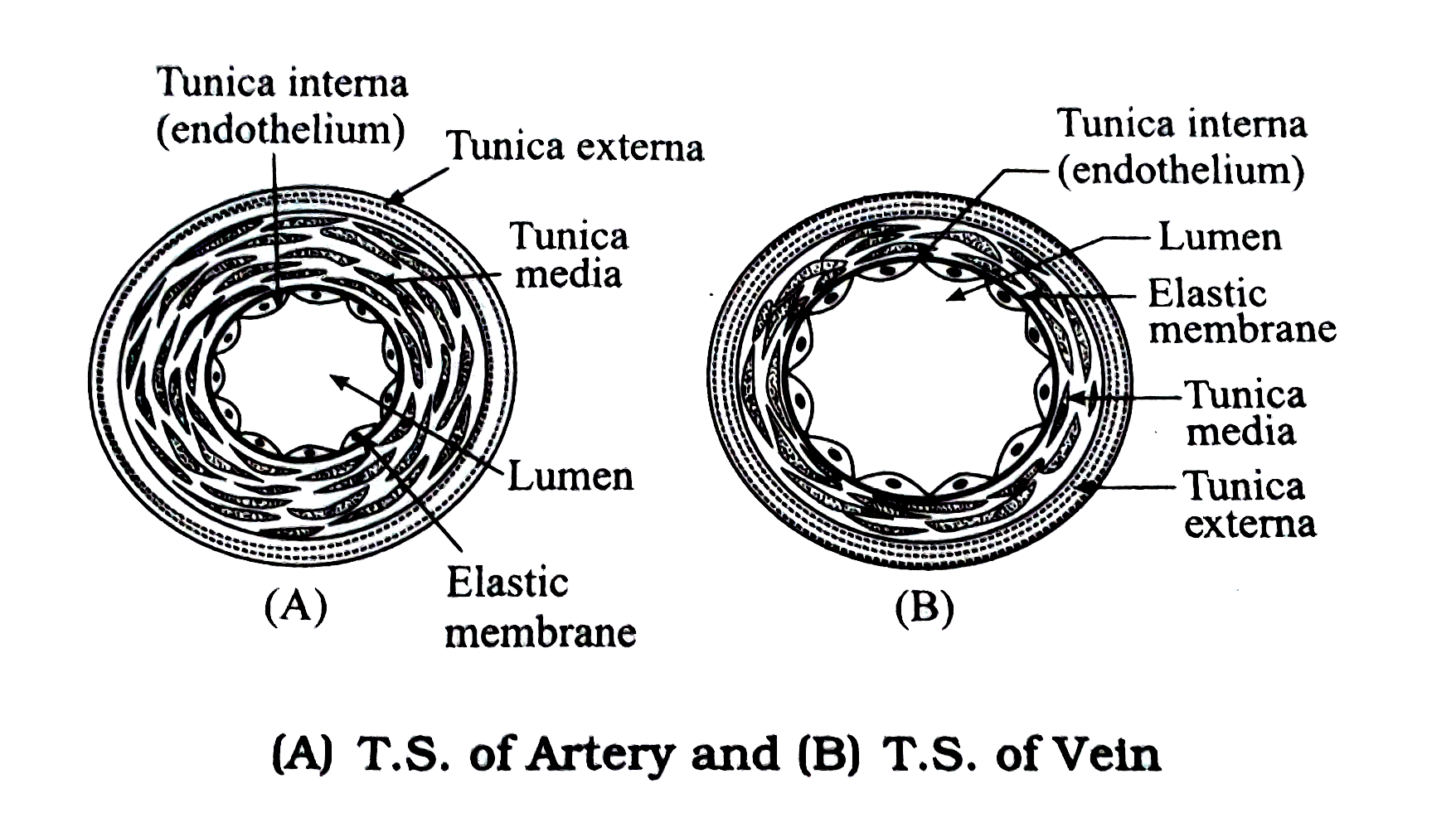Define
veins
Step-by-Step Text Solution:
1. Definition of Veins:
Veins are a type of blood vessel in the human body that play a crucial role in the circulatory system.
2. Function of Veins:
The primary function of veins is to transport blood. Specifically, they are responsible for carrying deoxygenated blood.
3. Deoxygenated Blood:
Deoxygenated blood is blood that has a high concentration of carbon dioxide (CO2) and low levels of oxygen. This blood is collected from various tissues throughout the body.
4. Direction of Blood Flow:
Veins carry deoxygenated blood from the tissues back to the heart. This process is essential for maintaining proper circulation and ensuring that the blood can be re-oxygenated in the lungs.
5. Exception - Pulmonary Vein:
An important exception to the general rule about veins is the pulmonary vein. Unlike other veins, the pulmonary vein carries oxygenated blood instead of deoxygenated blood. This oxygenated blood comes from the lungs and is transported back to the heart.
6. Conclusion:
In summary, veins are blood vessels that primarily transport deoxygenated blood from the body's tissues back to the heart, with the notable exception of the pulmonary vein, which carries oxygenated blood from the lungs.
---
Veins are a type of blood vessel in the human body that play a crucial role in the circulatory system.
The primary function of veins is to transport blood. Specifically, they are responsible for carrying deoxygenated blood.
Deoxygenated blood is blood that has a high concentration of carbon dioxide (CO2) and low levels of oxygen. This blood is collected from various tissues throughout the body.
Veins carry deoxygenated blood from the tissues back to the heart. This process is essential for maintaining proper circulation and ensuring that the blood can be re-oxygenated in the lungs.
An important exception to the general rule about veins is the pulmonary vein. Unlike other veins, the pulmonary vein carries oxygenated blood instead of deoxygenated blood. This oxygenated blood comes from the lungs and is transported back to the heart.
In summary, veins are blood vessels that primarily transport deoxygenated blood from the body's tissues back to the heart, with the notable exception of the pulmonary vein, which carries oxygenated blood from the lungs.
Topper's Solved these Questions
Similar Questions
Knowledge Check
- Question 1 - Select One
PH of blood in arteries and veins is
AHigher in veins and lower in arteriesBHigher in veins and lower in arteriesCSame in bothDVariable in both - Question 2 - Select One
Function of veins in leaf blade is
AExchange of gasesBAssimilation of foodCProvide rigidityDTranspiration - Question 3 - Select One
No. of renal arteries and veins in humans respectively
AOne pair, one pairBTwo pair, two pairCOne pair, tow pairDTwo pair,one pair
The arrangement of veins on the leaf lamina is called
View Solutiontunica interna of arteries and veins is composed of
View SolutionDifferentiate between arteries, veins and capillaries.
View SolutionThe main difference in the structure of arteries and veins is in
View SolutionThe function of a vein is
View Solution


